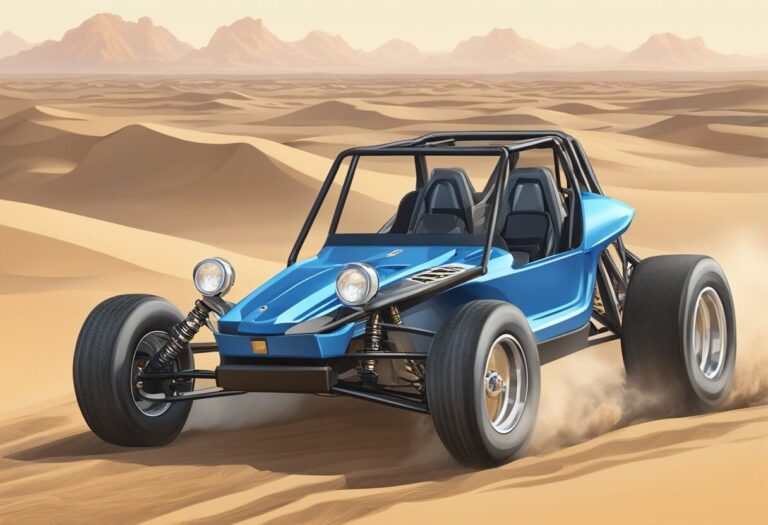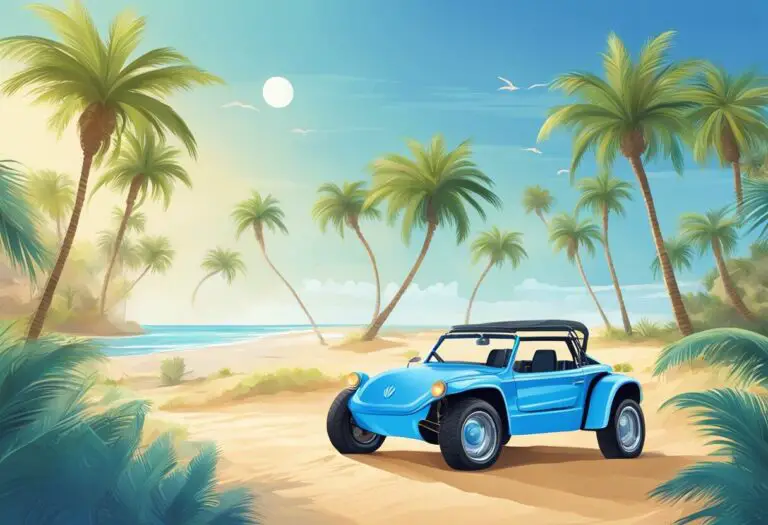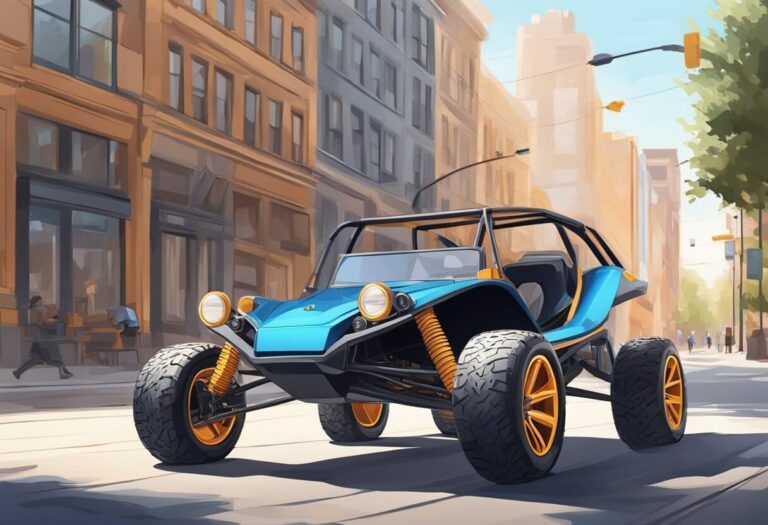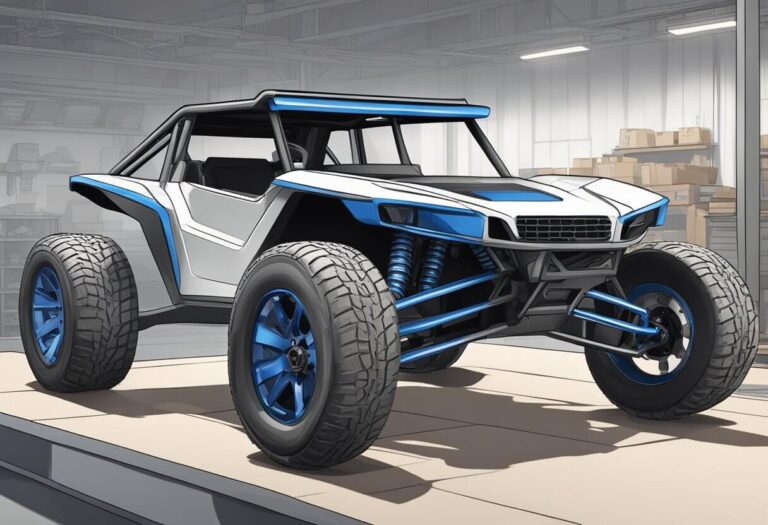Dune Buggy Kits: Ultimate Guide for Off-Road Enthusiasts
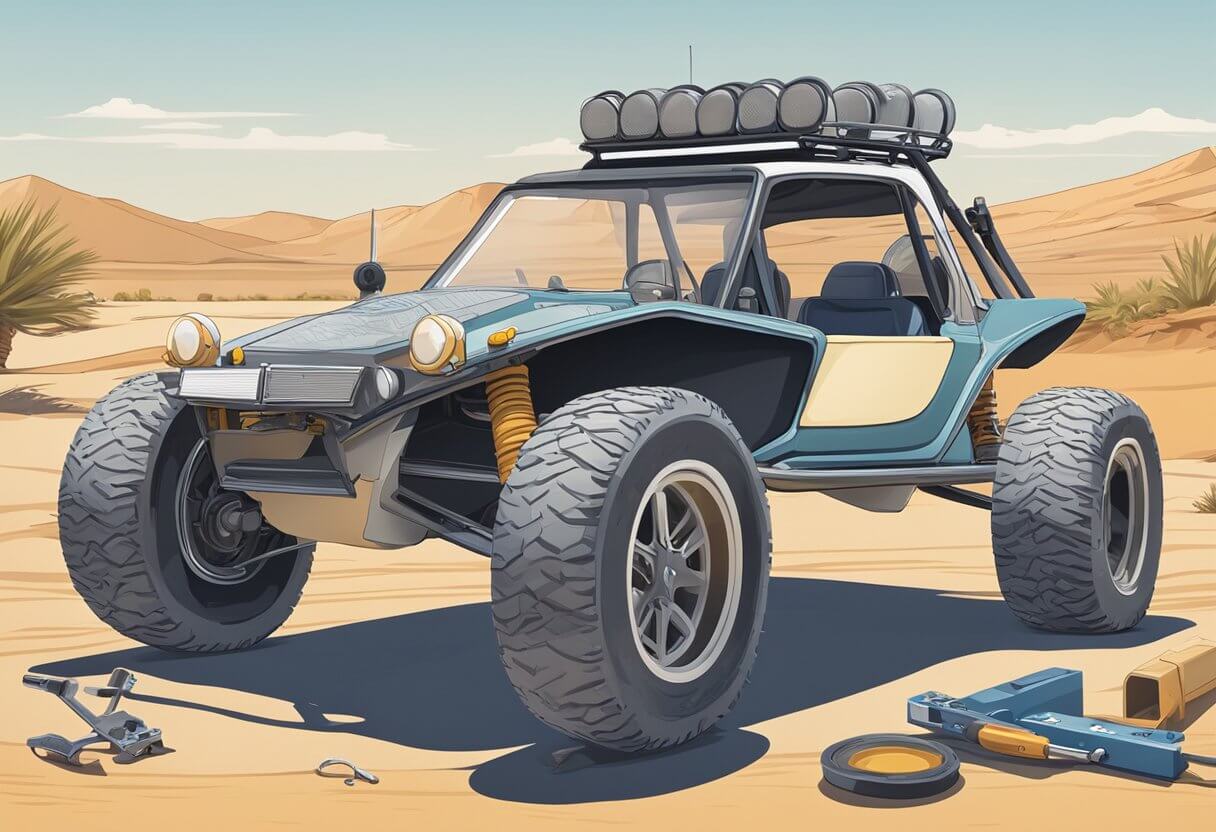
With off-roading growing increasingly popular, many adrenaline junkies are looking to build their own thrill ride to take on sand dunes, beaches, and rugged terrain. But where do you start when you want to assemble your own dune buggy? What are dune buggy kits, and what do they offer the aspiring off-road enthusiast? In short, dune buggy kits provide all the necessary parts and components to construct a custom recreational off-road vehicle. From fiberglass bodies to tube chassis to suspension systems, these kits allow DIYers to create their ideal sand-taming machine.
In this post, we’ll explore the world of dune buggy kits to help you determine if one of these build-it-yourself buggies is right for you. We’ll overview:
- The different types of kits available
- What parts and components are typically included
- Tips for assembling your own dune buggy
- Popular customization options
- Legal considerations for street use
- Maintenance best practices
- Cost considerations
So buckle up and get ready to go off-roading on a budget! This post will give you everything you need to know to decide if a dune buggy kit is your ticket to adrenaline-pumping fun.
Understanding Dune Buggy Kits
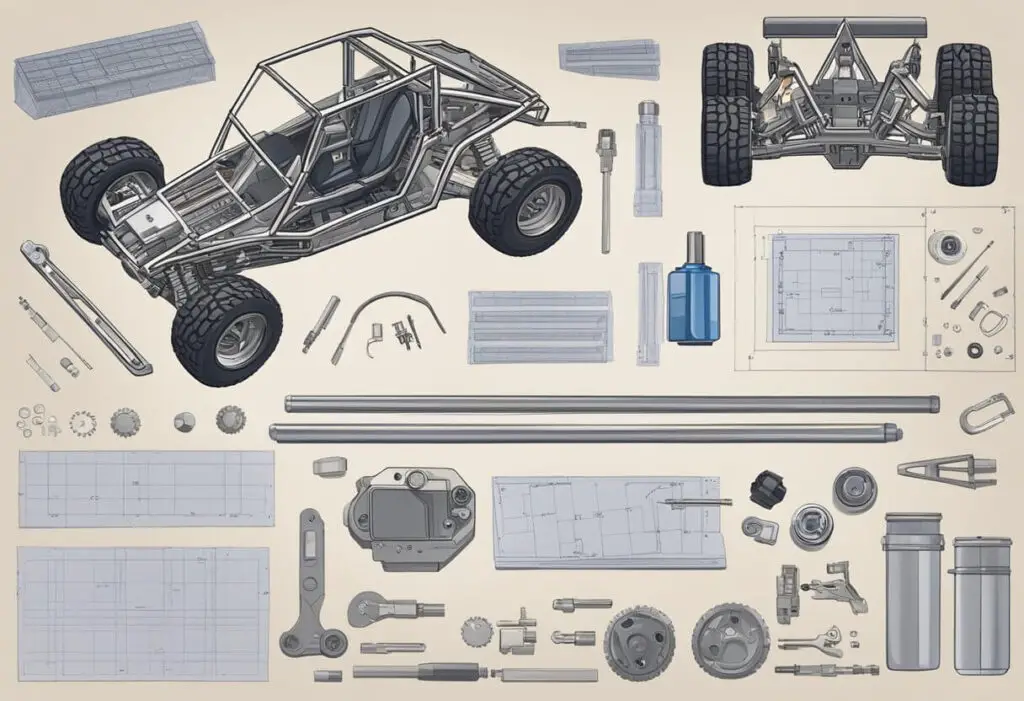
Types of Kits
Dune buggy kits come in various types, each with its own unique features and specifications. The most common types of dune buggy kits available in the market include:
- Fiberglass Kits: These kits are the most popular and widely available. They come in various shapes and sizes and are relatively easy to install. Fiberglass kits are lightweight and durable, making them ideal for off-road use.
- Steel Tube Kits: These kits are made of steel tubing and are designed to be welded together. They are more durable than fiberglass kits and are ideal for heavy-duty off-road use. However, they are more complex to install and require a higher level of technical expertise.
- Chassis Kits: These kits are designed to provide a complete chassis for the dune buggy. They come with all the necessary components, including suspension, steering, and brakes. Chassis kits are ideal for those who want to build a dune buggy from scratch.
Components Included
Dune buggy kits typically include the following components:
- Body: This is the outer shell of the dune buggy and is usually made of fiberglass or steel.
- Chassis: This is the frame of the dune buggy and provides the structure for the vehicle.
- Suspension: This includes the shocks, springs, and other components that absorb the impact of bumps and uneven terrain.
- Steering: This includes the steering wheel, column, and other components that allow the driver to control the direction of the vehicle.
- Brakes: This includes the brake pedal, master cylinder, and other components that allow the driver to slow down or stop the vehicle.
- Engine: Some dune buggy kits come with an engine, while others require the buyer to purchase an engine separately.
In conclusion, understanding the different types of dune buggy kits and the components they include is essential for anyone looking to build a dune buggy. It is important to choose a kit that meets your specific needs and technical expertise.
Building Your Dune Buggy
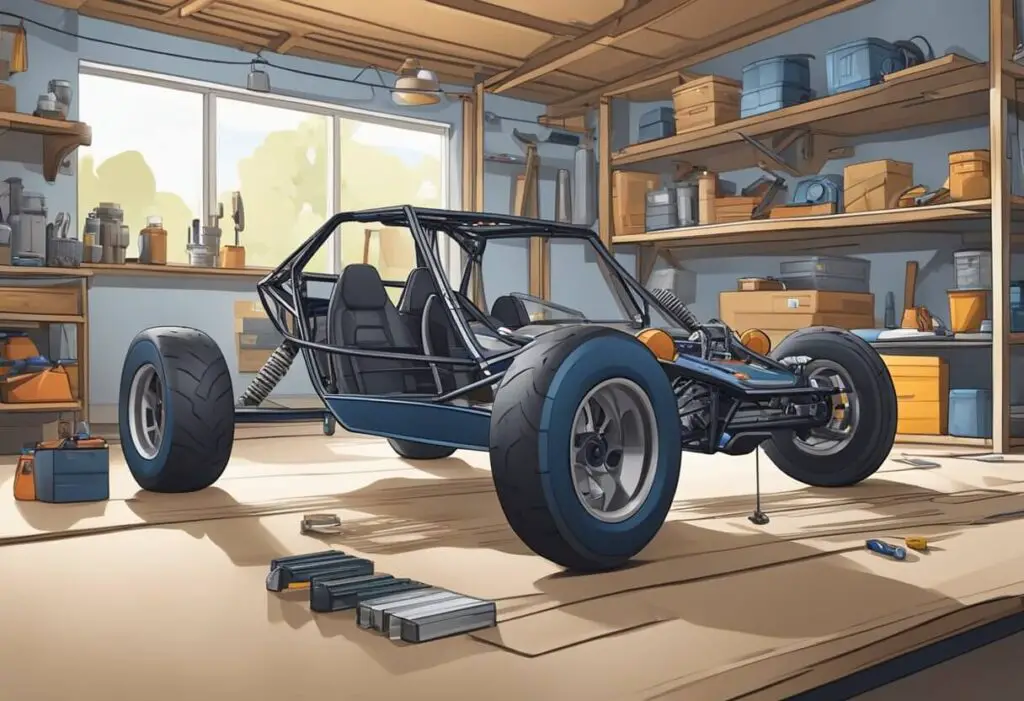
Required Tools
Before starting the assembly of your dune buggy kit, make sure you have all the necessary tools. You will need access to a welder, preferably MIG or TIG, a level, tape measure, and a 4 1/2″ angle grinder. Additionally, you will need a set of standard hand tools, including wrenches, sockets, pliers, screwdrivers, and a hammer.
Assembly Instructions
The assembly instructions for your dune buggy kit will vary depending on the manufacturer and model. It is important to carefully read and follow the instructions provided with your kit. Make sure to have a clear workspace and organize the parts before starting the assembly process.
Begin by assembling the frame and chassis, following the instructions provided. Once the frame is complete, install the engine, drive train, axles, wheels, tires, and suspension. Next, install the electrics if you intend to use it on public roads as well. Finally, install the body and any additional accessories or modifications.
Safety Measures
Safety should always be a top priority when building and operating your dune buggy. Make sure to wear appropriate safety gear, including eye protection, gloves, and a welding helmet. Follow all safety instructions provided with your kit and use caution when operating power tools and equipment. Additionally, make sure to test all components and systems before operating your dune buggy to ensure they are functioning properly.
Customization Options
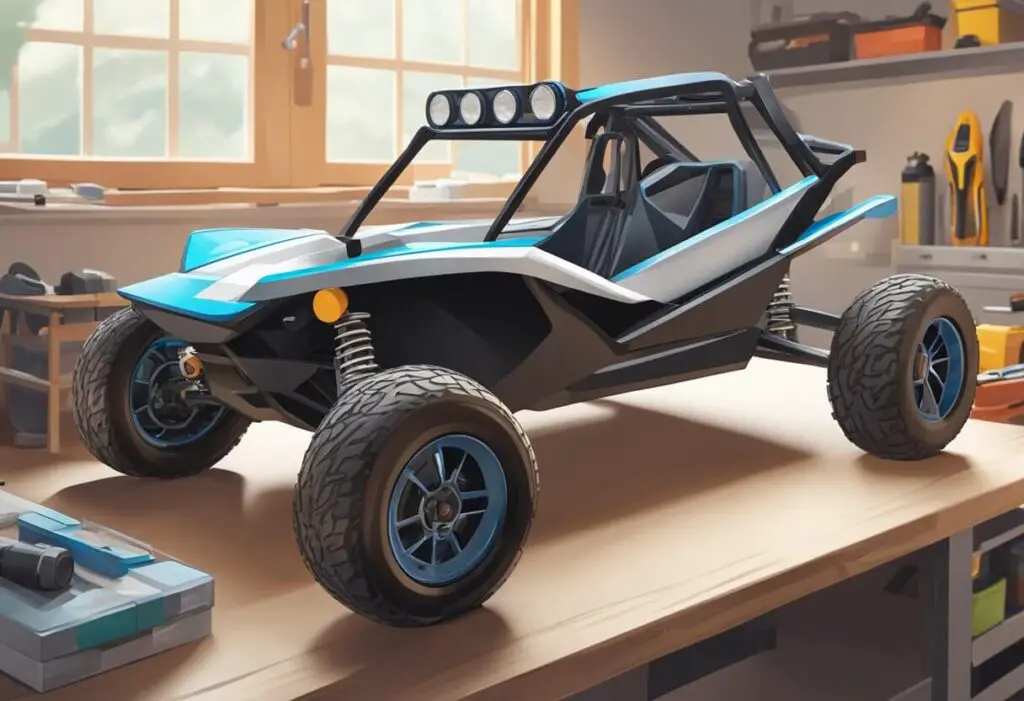
When it comes to dune buggies, customization is the name of the game. There are a variety of options available to make your buggy stand out from the rest. In this section, we’ll explore some of the most popular customization options for dune buggies.
Performance Upgrades
One of the most popular ways to customize a dune buggy is by upgrading its performance. This can be done in a number of ways, including:
- Engine upgrades: Installing a more powerful engine is a popular way to increase a dune buggy’s speed and power. Some popular engine upgrades include turbochargers, superchargers, and nitrous oxide systems.
- Suspension upgrades: Upgrading a dune buggy’s suspension can improve its handling and make it more comfortable to drive. Some popular suspension upgrades include adjustable shocks, sway bars, and coilover systems.
- Brake upgrades: Upgrading a dune buggy’s brakes can improve its stopping power and reduce brake fade. Some popular brake upgrades include larger brake rotors, high-performance brake pads, and stainless steel brake lines.
Aesthetic Enhancements
In addition to performance upgrades, there are a variety of aesthetic enhancements that can be made to a dune buggy. These include:
- Paint and graphics: A custom paint job or graphics package can make a dune buggy stand out from the crowd. Some popular paint options include metallic finishes, candy colors, and matte finishes.
- Lighting upgrades: Upgrading a dune buggy’s lighting can improve visibility and make it more stylish. Some popular lighting upgrades include LED headlights, taillights, and light bars.
- Interior upgrades: Upgrading a dune buggy’s interior can make it more comfortable and stylish. Some popular interior upgrades include custom seats, steering wheels, and audio systems.
Overall, there are a variety of customization options available for dune buggies. Whether you’re looking to improve performance or enhance its appearance, there are plenty of options to choose from.
Legal Considerations
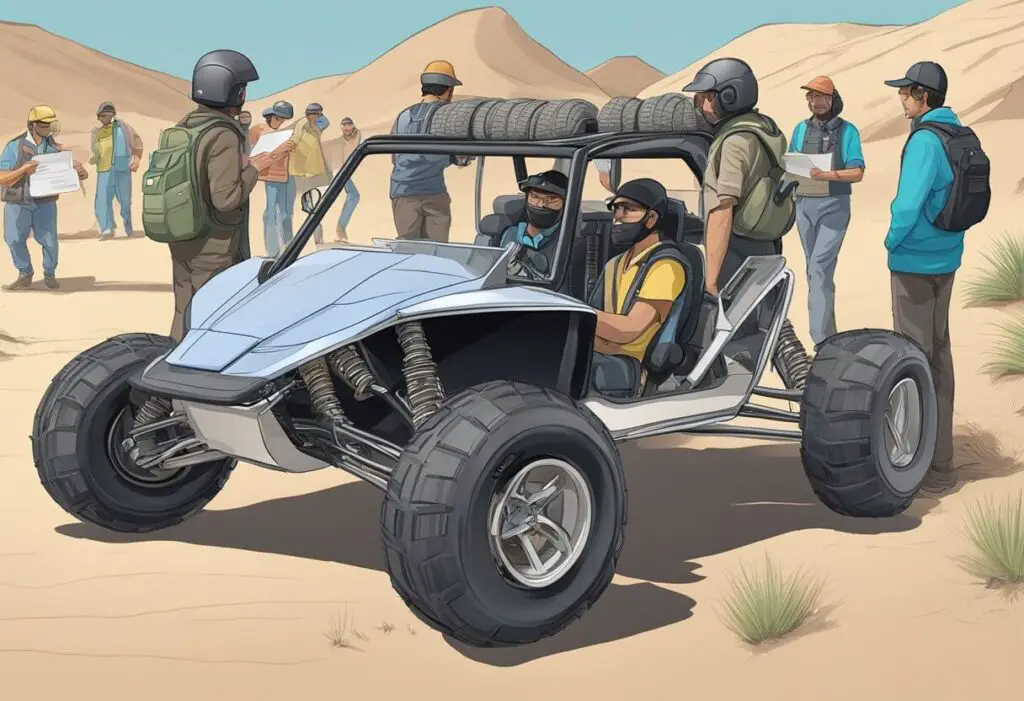
When it comes to dune buggy kits, there are some legal considerations that must be taken into account. This section will provide an overview of the street legality and off-road regulations that apply to dune buggies.
Street Legality
In order to drive a dune buggy on public roads, it must be street legal. This means that it must comply with all the regulations and requirements set by the Department of Motor Vehicles (DMV). Some of the key requirements include the installation of safety features such as seat belts, windshield with wipers, and working muffler. It is also important to ensure that the dune buggy has a valid registration and license plate.
Off-Road Regulations
While off-road driving is often associated with dune buggies, it is important to note that there are still regulations that apply. For example, many states have laws that prohibit off-road vehicles from damaging the environment. This means that dune buggies must stay on designated trails and avoid damaging any plants or wildlife. It is also important to note that some areas may require permits or fees for off-road driving.
Maintenance and Upkeep
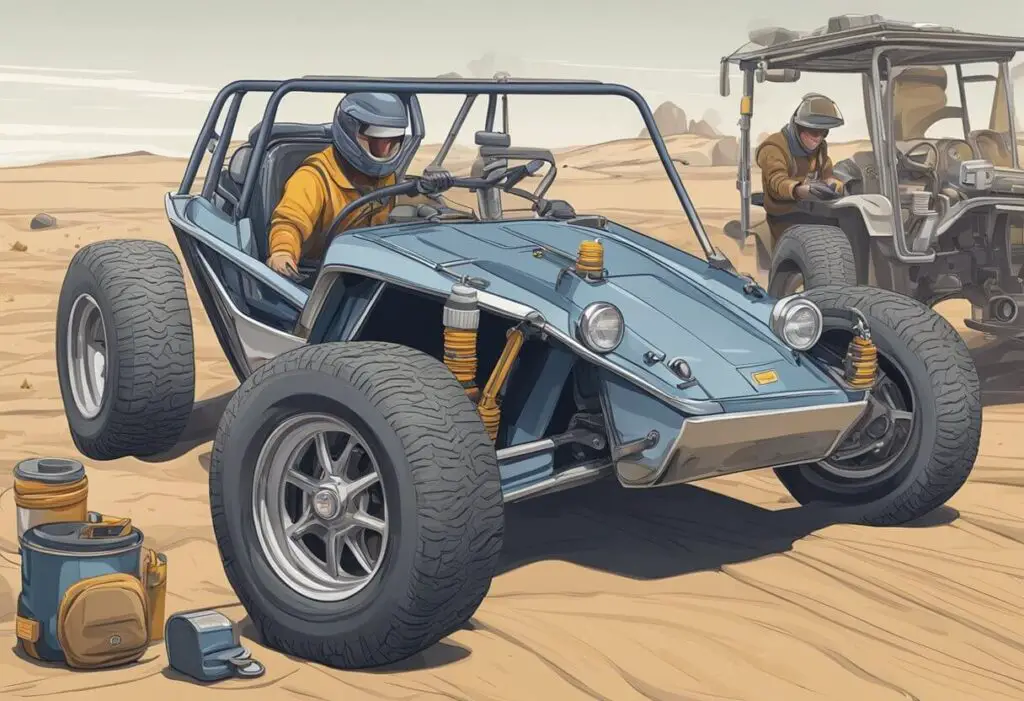
Maintaining a dune buggy is essential to ensure its longevity and performance. Regular maintenance and upkeep can help prevent costly repairs and keep the vehicle running smoothly. Here are some tips for maintaining and keeping a dune buggy in top condition:
1. Regular Inspection
Regularly inspecting the dune buggy is crucial to identify any problems before they become serious. Look over the vehicle every time you take it out, especially if you are planning a more extended excursion. Inspect the wheels, tires, brakes, and suspension system for any signs of wear and tear. Check the oil and fluid levels and top them off as needed.
2. Cleaning
Cleaning the dune buggy is also an essential part of maintenance. Dirt, sand, and debris can accumulate on the vehicle, which can cause damage to the paint and body. Regularly wash the dune buggy with soap and water to remove any dirt and debris. Wax the vehicle to protect the paint and body from the elements.
3. Lubrication
Lubricating the moving parts of the dune buggy is crucial to ensure they function correctly. Apply lubricant to the suspension system, steering system, and other moving parts as needed. This will help prevent corrosion and ensure the parts move smoothly.
4. Storage
Proper storage is also crucial to maintain the dune buggy’s condition. Store the vehicle in a dry, cool place, away from direct sunlight and moisture. Cover the vehicle with a tarp to protect it from the elements.
By following these tips, a dune buggy owner can keep their vehicle in top condition for years to come. Regular maintenance and upkeep can help prevent costly repairs and ensure the vehicle performs at its best.
Cost Analysis
Kit Prices
Dune buggy kits come in various prices, depending on the manufacturer and the level of customization. The Meyers Manx Remastered kit, for instance, costs $5,995 and includes the body, dashboard, and trim required to make the most basic version of the buggy. The kit comes in 18 solid gel-coat colors, with 46 metallic colors available as a $1000 option. Other manufacturers offer kits at different prices, ranging from $250 to $30,000 depending on the kit’s complexity and level of customization.
Additional Expenses
Aside from the kit price, there are other expenses to consider when building a dune buggy. These expenses include the cost of the engine, transmission, suspension, brakes, wheels, tires, and other components. The cost of these components can vary depending on the make and model of the vehicle.
Another expense to consider is the cost of labor. Building a dune buggy requires a significant amount of time and effort, especially if you are building it from scratch. You may need to hire a professional mechanic to help you with the build, which can add to the overall cost of the project.
Finally, there are also ongoing expenses to consider, such as maintenance, repairs, and insurance. These expenses can add up over time, so it’s important to factor them into your budget when considering the cost of building and owning a dune buggy.
In summary, the cost of building a dune buggy kit can vary significantly depending on the manufacturer, level of customization, and additional expenses. It’s important to carefully consider all of these factors when deciding whether a dune buggy is a feasible option for your budget and lifestyle.
Choosing the Right Kit
When it comes to choosing the right dune buggy kit, there are a few factors to consider. These include the level of mechanical knowledge required, the type of kit, and the brand. By taking these factors into account, you can ensure that you choose a kit that meets your needs and is compatible with your skill level.
Brand Comparisons
There are several reputable brands that offer dune buggy kits, each with their own unique features and benefits. Some of the most popular brands include Meyers Manx, V-Dub Store, and Berrien Buggy. Meyers Manx is the only brand that offers a brand-new buggy that you can still buy in kit form and assemble yourself. V-Dub Store offers the Scorpion 2-Seat Off Road Kit, which is a great option if you have moderate mechanical knowledge. Berrien Buggy offers the Roadster-T Chassis and Floor Kit, which is a good option for beginners.
User Reviews
When choosing a dune buggy kit, it is important to read user reviews to get an idea of the experiences of others who have purchased and assembled the kit. Look for reviews that mention the level of difficulty of assembly, the quality of the parts, and the overall performance of the finished buggy. Be wary of reviews that seem overly positive or negative, as these may not be entirely accurate.
Community and Support
Forums and Groups
One of the best things about being a dune buggy owner is the sense of community that comes with it. There are plenty of online forums and social media groups dedicated to dune buggies where enthusiasts can share their experiences, ask for advice, and connect with other owners.
One popular forum is the Dune Buggy Brothers forum, which has a large community of dune buggy owners from around the world. Another great resource is the Meyers Manx Owners Club, which is dedicated to the iconic Meyers Manx dune buggy. These forums and groups are a great way to learn more about dune buggies, get advice on maintenance and repairs, and connect with other owners who share your passion.
Events and Gatherings
Attending a dune buggy event or gathering is another great way to connect with other owners and enthusiasts. There are plenty of events held throughout the year, ranging from small meetups to large-scale gatherings.
One of the most popular events is the annual Baja 1000 race, which attracts dune buggy owners from around the world. There are also smaller events, such as the Dune Buggy Invasion held in Pismo Beach, California. These events are a great way to see other dune buggies in action, learn more about the sport, and connect with other owners.
Overall, the dune buggy community is a welcoming and supportive group of enthusiasts who are passionate about their vehicles. Whether you’re a seasoned owner or just starting out, there are plenty of resources available to help you get the most out of your dune buggy.

